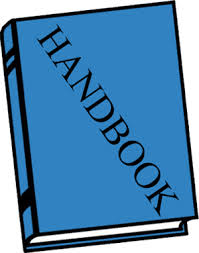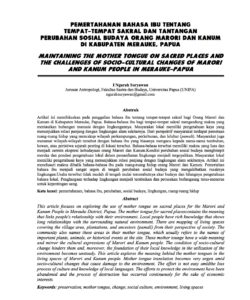Paper: Arka, I W. to appear. Nominal and verbal number in Marori
Arka, I Wayan. to appear. Nominal and verbal number in Marori. In OUP Handbook of grammatical number, edited by Patricia Cabredo Hofherr and Jenny Doetjes. Oxford: Oxford University Press.

Overall Marori shows a three-way nominal number distinction, but number marking is distributed across morphological and syntactic sites. Nominal number marking consists of free nominal marking (free pronouns and derived nouns) and verbal indexing. It follows the animacy hierarchy (cf. Corbett 2000:90ff) with a specific SG-DU-PL opposition is relevant only in the top segments of the hierarchy, namely first and second bound pronominals. In most of other cases, number marking is underspecified (PL vs. NPL / SG vs. NSG distinction).
Verbal morphology in Marori exhibits verbal number, which is intricately tied to nominal number. Underspecification and distributed exponence in number marking allow specific number, like DU, to be constructed without DU morphology. Distributed number exponence is not unique to Marori. It is also a salient feature of the neighbouring languages of Southern New Guinea; e.g. found in Nen (Evans 2015), Ngkompu (Carroll 2016) and Marind (Olsson 2017).
This chapter also discusses number in relation to agreement indexing and inclusory constructions. Free NPs are indexed by bound pronouns on verbs, and the relationship between them is anaphoric in nature with the agreement typically involving the person feature. The number feature of free NPs and verbs can be incompatible, however. This is the case with inclusory constructions, where the verbs must be in plural forms. The reverse pattern (with plural free NPs and singular verbs) give rise to a small plural/paucal-like meaning.
The complexity of number systems and the interaction with other grammatical systems in Marori and other Papuan languages pose a challenge to any grammatical theory. Theoretical analyses of Marori data has been done by Arka (Arka 2012a, b, 2013, 2015, 2016a, b, 2017, 2016c), mainly within LFG (Bresnan et al. 2015, Dalrymple 2001, Falk 2001). For the diversity of the neighbouring Papuan languages in Southern New Guinea, see Evans et al (2017); Papuan languages of the Bird’s Head, Eastern Indonesia and east Timor, see Holton and Klamer (2017); Papuan languages of Island Melanesiam see Stebbins, Evans, and Terrill (2017); and for the typological diversity of Papuan languages in general, see Foley (1986, 2017).



